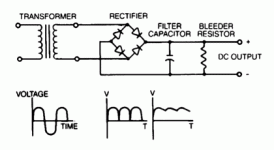Somewhere I drew up a schematic for a voltage cutoff that uses a solid state relay to kill the input power whenever the output reaches a set voltage. Kind of a crude CC-CV supply.
I think the output filter cap might be a good idea or alternately a hefty inductor to reduce the ripple current getting to the cells. Adds weight/size I know, but there were reports of battery cells making a buzzing sound during charge (probably bad).
I think the output filter cap might be a good idea or alternately a hefty inductor to reduce the ripple current getting to the cells. Adds weight/size I know, but there were reports of battery cells making a buzzing sound during charge (probably bad).



